Q’orikancha:
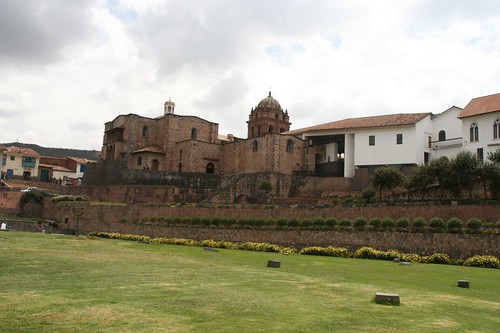
View of the complex from Ave el Sol.
Q’orikancha was originally an Incan complex dedicated to the worship of the sun, including the Temple of the Sun and smaller temples such as the Temple of the Moon, Lightning, and Rainbows. At one time the walls and even the floor of the Temple of the Sun were covered in plates of gold, while the Temple of the Moon was clad in silver.

This piece of stone was used as trim around a window - gold decorations were tied through the holes. The Incans really liked their Bling.
When the Spanish came they melted down the precious metals, destroyed the temples, and later built the Baroque Convent of Santo Domingo using the Incan Masonry as foundations.
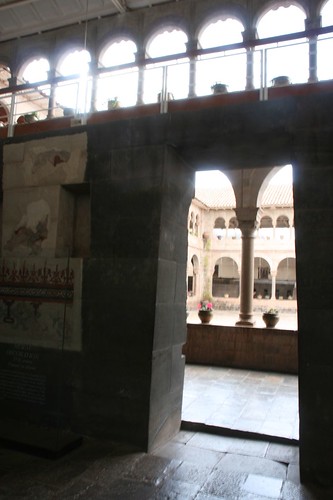
Spanish convent through the Incan walls
In 1950, an earthquake destroyed much of the Spanish convent, however the Incan architecture remained.
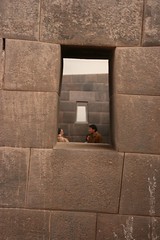
This is partially because the walls are sloped, and partially because they are built in an interlocking system, so the wall is literally woven together rather than just stacked. And it’s all done without mortar.
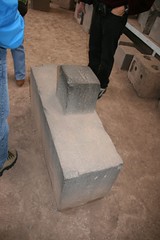
Stone block – the tab at the top fits into a hole in another block
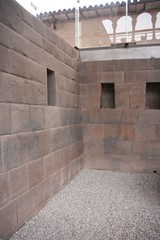
Sloping walls
Now, with UNESCO’s involvement the whole site is preserved as a museum:
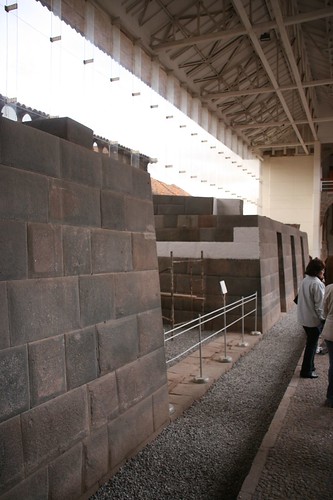
The glass and steel enclosure was built by UNESCO
The entire city of Cusco is listed as an UNESCO World Heritage Site. I don’t quite understand all of the politics behind this or what all it means. We saw workers in UNESCO uniforms in many places so I know there are some serious benefits to the listing. But there are laws such as it is illegal to use anything other than tile as roofing in Cusco so I think that UNESCO has quite a bit of influence over the built environment there. Very interesting from a preservation standpoint…
Saqsaywaman:
On the hills outside of Cusco is the fortress of Saqsaywaman. It forms the head of the Puma that is Cusco and is believed to have had both military and religious significance. The site is HUGE.

As impressive as it is only around 20% of the original structure remains today. It was used as a quarry for hundreds of years up until the 1930's. Many of the churches and houses in Cusco are built with stone from here. (Yet another parallel between Cusco and Rome. The Coliseum was used as a quarry, as well.)
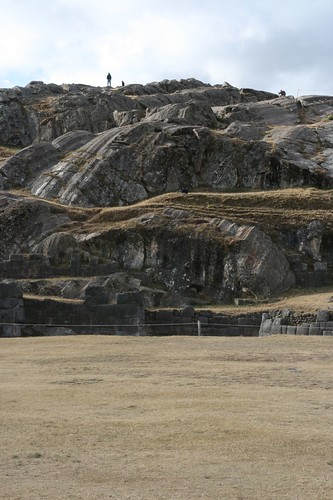
The stonework is once again perfectly fitted without masonry; however the blocks at this site are massive:
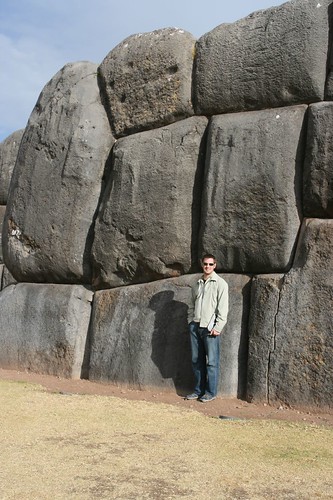
Some weigh over 125 tons. There is still debate about how the Incans managed to build this but the theory is that they used wood forms to be able to carve the stone into perfectly interlocking blocks.
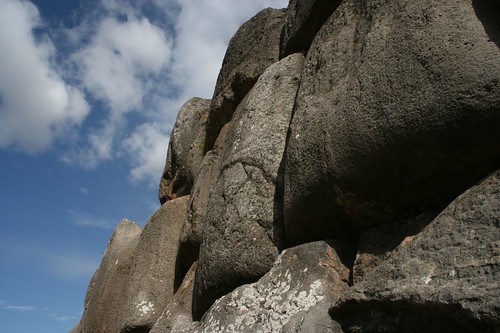
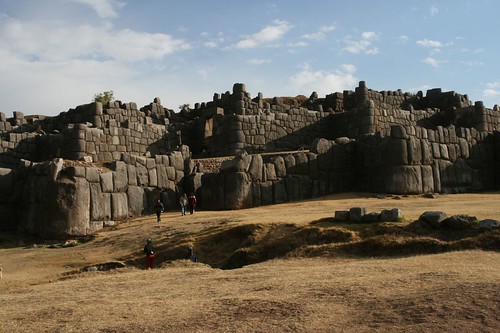
Today, through UNESCO, it is a tourist site:
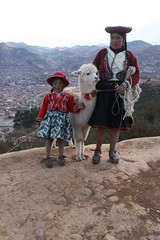
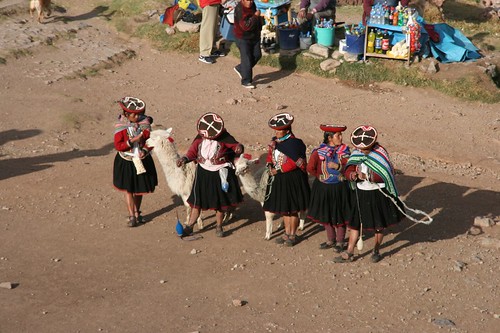
Women in traditional dress – I know that they are just here for the tourists but I love that they are spinning! And have alpacas with them!
With spectacular views of Cusco and the hills surrounding the city:
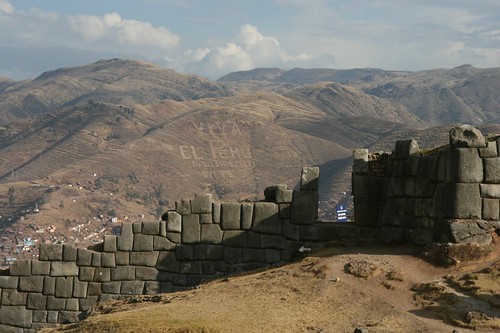
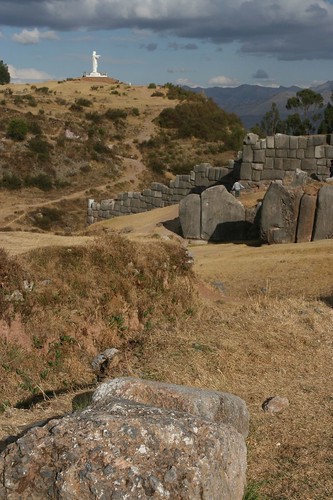
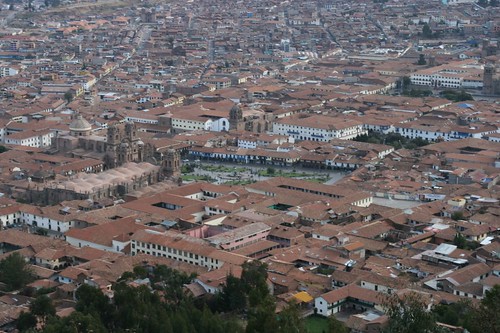
Q'enqo
Near Saqsaywaman is the small sacred site of Q’enqo. Q'enqo means “twisted” or “labyrinth” in Qechua and is one of the many smaller worship places that were said to exist around the Cusco area. Most of these little temples were destroyed by the Spanish as a way of eradicating the Incan religious beliefs.
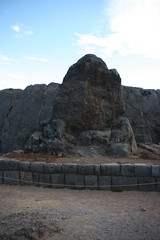
Carved Rock at Q'eno
Now these sites are being rediscovered, excavated, and studied.
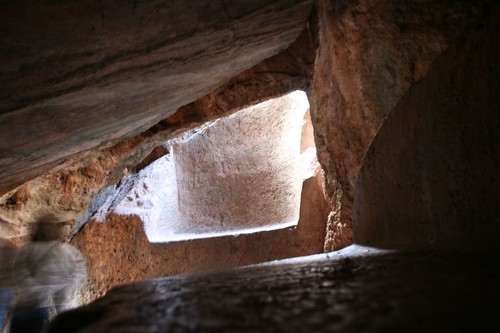
Underground passageway probably used in the ritual sacrifice of llamas.

Amphitheater - each of these niches probably held statues or possibly even mummified bodies. Freaky! Mummies!
Tambomachay
Also near to Saqsaywaman is Tambomchay which means "lodge" or "resting place." It is thought that this Incan site was used as a retreat. The most impressive part of it is the ritual baths – amazing how after all of these years the Incan water features still work!
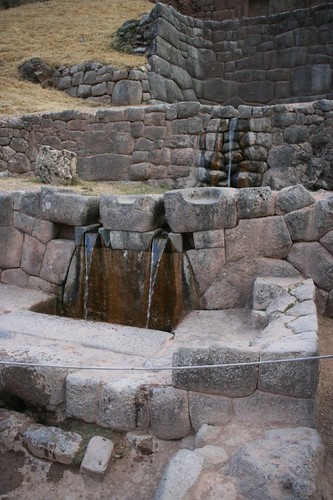
This site was crawling with tour groups and was a bit frustrating to try to get a feel for. After this we were pretty ready to leave the hustle and bustle of Cusco and get out into the less crowded towns of the Sacred Valley.
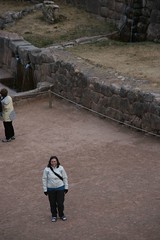
I was so far behind Matt in exploring the ruins b/c 3 different people asked me to take their picture. Why am I always the one people ask?
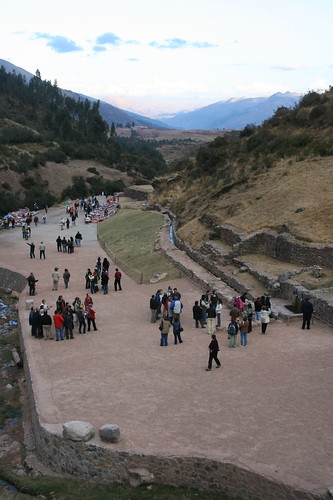
Lots 'o tour groups. And people selling crap to tour groups. But it's a pretty view!
Next up? Our trip to the markets and towns of the Sacred Valley. That post will be much more fun than this one which sortof felt like writing a history report – honestly experiencing it was like that, too. I like learning about history, though!
Also -I’m going to try to do a Peru post every Friday until I’m done. It takes about a week to put them together and this way you guys know when they are coming so you can skip them if you’re not interested (or look forward to them if you are!)

Why you ask? Because you always have a cheery smile on and you take great pictures.
ReplyDeleteGorgeous! Thanks for taking me to places that I don't think I'll ever get to visit!
ReplyDeleteReally fascinating! I'm looking forward to Friday!
ReplyDeletemore amazing pics...and so sad that flickr won't let me use them as my desktop : (
ReplyDeleteseriously, looks like you saw some fabulous sites!